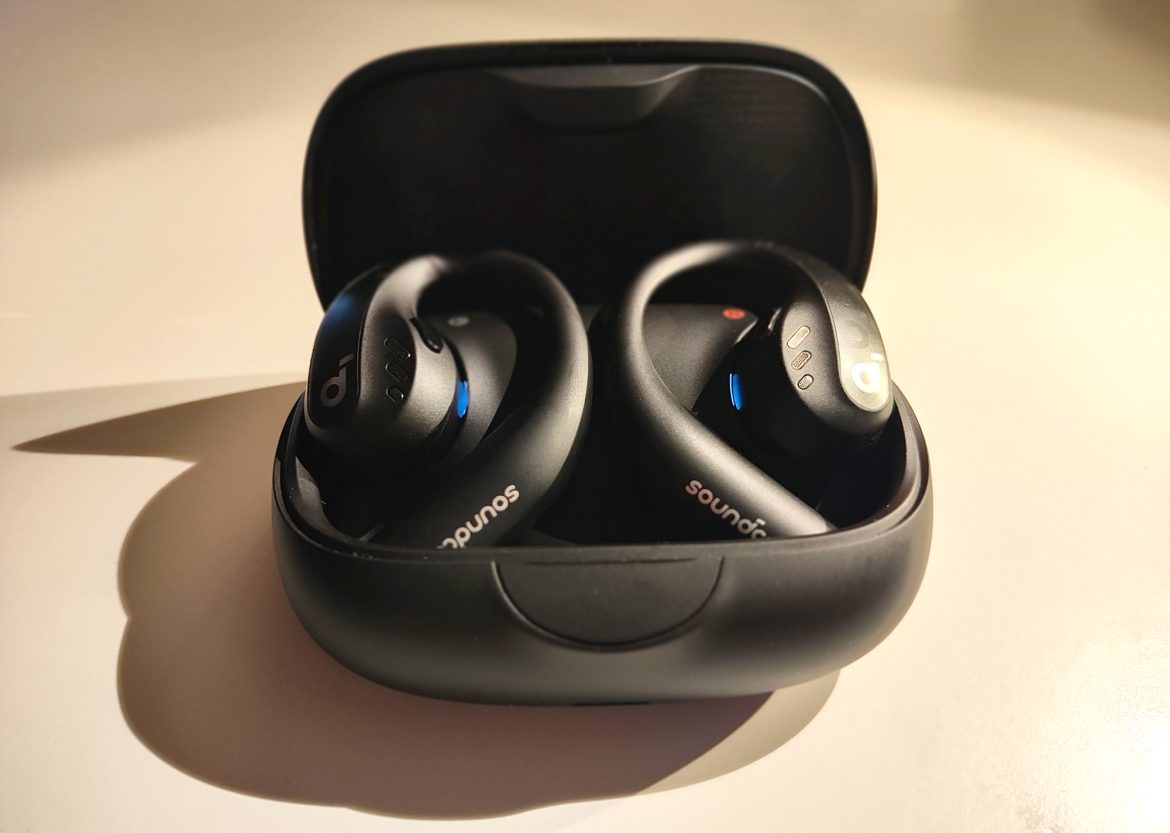TL;DR
Anker's Aerofit Pro offers impressive 14-hour battery life and LDAC support, aiming for an open-ear design ideal for situational awareness during activities. However, they're heavier than competitors, offer a limited soundstage, and lack robust button customization, making them less versatile for general use. Despite advanced features, practical drawbacks and a lack of clear purpose prevent them from shining. Discover if these open-ear buds are the right fit for your active lifestyle by reading the full review.
It’s somewhat surprising that Anker’s Soundcore headphone series doesn’t have a stronger presence in the Swedish market. Our experience with their products consistently reveals noteworthy innovations, often features that are later adopted by other manufacturers. We observed exceptional battery performance with the Space Q45, tested the water resistance of the Sport X10, and explored posture correction with the Liberty 4. This time, we’re presented with a focus on ambient awareness and 14 hours of battery life, without the charging case.
This review focuses on the Anker Soundcore Aerofit Pro.
A Completely Open Model
The Anker Soundcore Aerofit Pro employs a similar design to the Shokz Open Fit, which we reviewed previously. It features a speaker module suspended in a frame that rests around the ear. This is neither bone-conduction technology nor a traditional in-ear design. Our prior testing revealed a limited use case and a constrained soundstage. These headphones are best suited for quieter environments and excel as a headset, providing the user with auditory feedback of their own voice. The open design also enhances safety by allowing the user to remain aware of their surroundings.
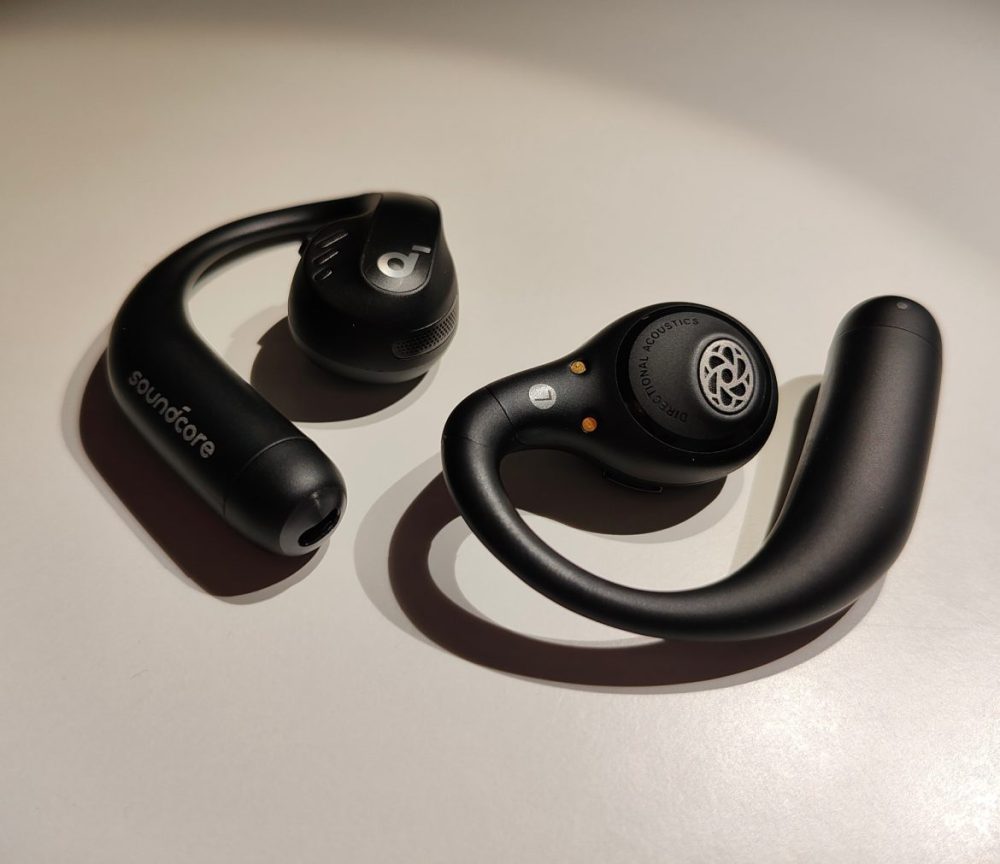
The Details of the Anker Soundcore Aerofit Pro
As previously noted, these headphones offer a 14-hour battery life (46 hours total with the charging case), support the LDAC codec, and utilize physical buttons on each earcup for control. The charging case is notably larger than comparable offerings, due to the headphones resting side-by-side, instead of stacked. This increased size likely accommodates the larger drivers and batteries within the Aerofit Pro. Wireless charging is not supported. The Soundcore app offers a streamlined menu system compared to other models. Marketed largely for training, the Aerofit Pro includes an adjustable band to ensure a secure fit.
The aesthetic design warrants brief mention. The shapes, LEDs, and color choices contribute to a futuristic appearance, extending to details like the stylish driver grilles. However, the prominent and repetitive use of the Soundcore logo detracts from the overall design, diminishing what could be a more refined look. While not a critical flaw, it contrasts with the typically stylish and confident design choices we’ve seen from Soundcore.
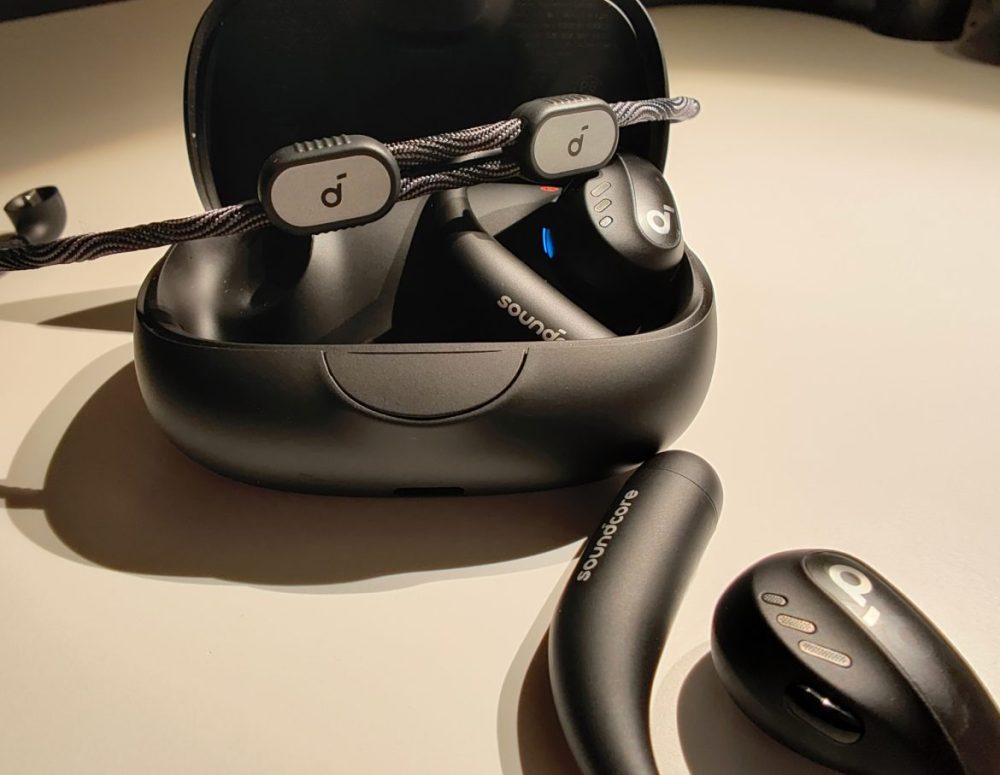
Unfortunately, More Problems Than Benefits
The 14-hour battery life is indeed impressive for compact headphones, potentially allowing for extended use. However, prolonged wear necessitates comfort and a lightweight design. The Shokz Open Fit strikes a better balance in this regard. While smaller and offering a reduced battery capacity, the Open Fit is less noticeable when worn. The Soundcore Aerofit Pro, at 11 grams per earcup (compared to the Shokz Open Fit’s 6 grams), is more perceptible. Adding the retaining buckle increases the weight by another 7 grams, resulting in approximately 30 grams borne by the ear. This increased weight negates some of the benefits of the extended battery life, as removing the headphones provides welcome relief.
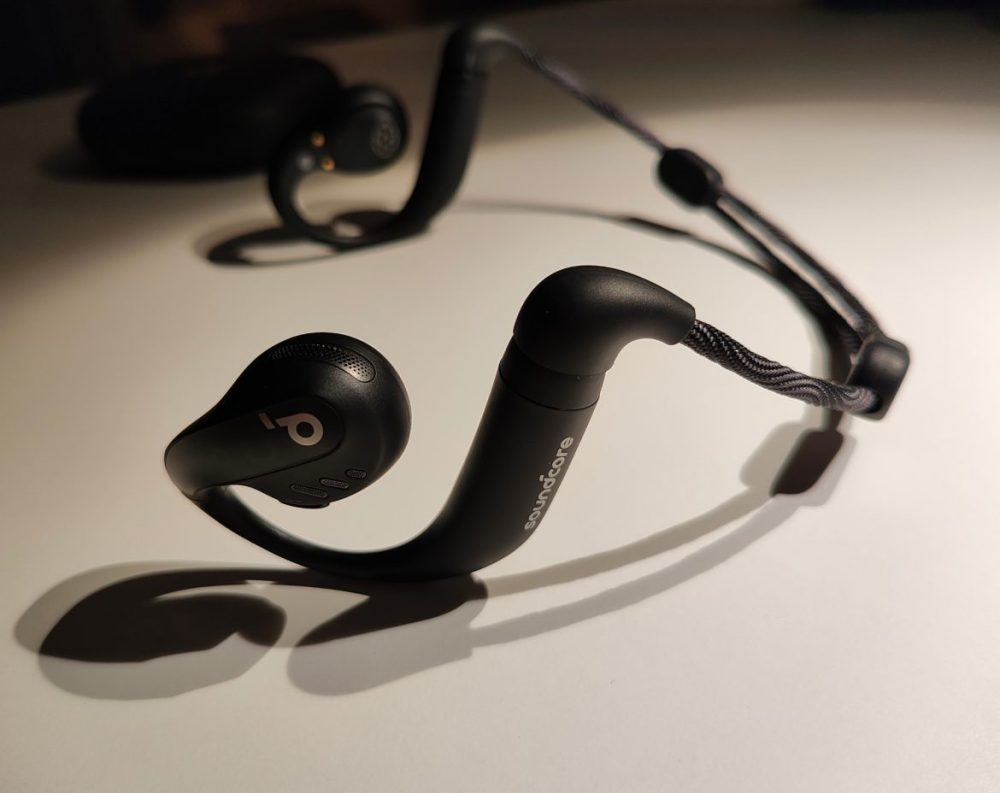
The Soundcore Aerofit Pro performs adequately as a headset for calls. However, customization options for button controls during calls are absent, requiring users to learn the default functions (similar to the Shokz Open Fit). A single click answers a call, while a long press ends it. Button customization is limited to music playback and voice assistant activation. This limitation suggests a primary focus on training applications, which restricts the overall usability of the device.
Even during exercise, a relatively quiet environment is necessary to avoid excessively increasing the volume. While the ability to hear surrounding sounds is beneficial when cycling or running in urban areas, providing increased safety and awareness, using these headphones in a noisy gym can be distracting. The same issue arises on buses, trains, and subways.
Consequently, the Soundcore Aerofit Pro presents some practical challenges, proving more difficult to use than the Shokz Open Fit. The flagship features, such as LDAC support and the 14-hour battery life, are not significant advantages given the unremarkable soundstage, a common characteristic of both the Shokz and Soundcore models.
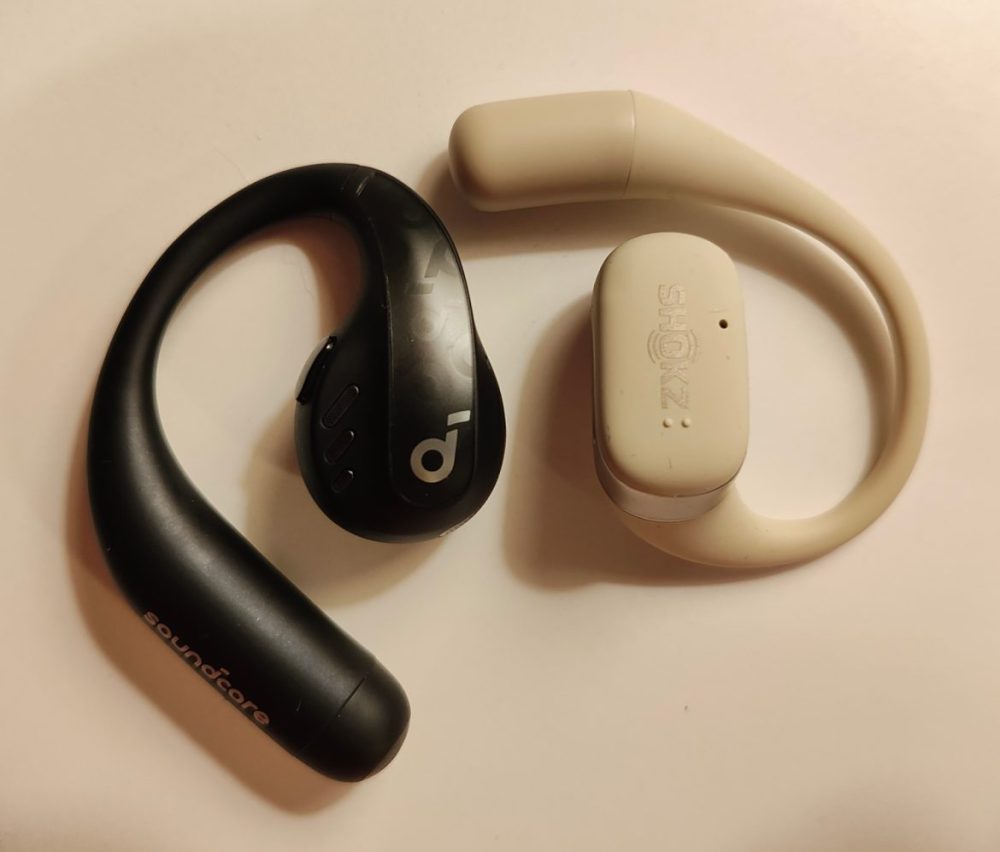
How is the Sound Then?
The soundstage should not be evaluated in the same manner as traditional headphones. It does not match the performance of other headphone designs, which is expected. However, improved clarity in the higher frequencies would be desirable, as they currently sound somewhat muted. The EQ settings are not particularly effective, and extensive adjustments fail to replicate the bass response of Soundcore’s signature EQ, or to improve the treble. While the Soundcore Aerofit Pro offers superior bass, we prefer the clarity and midrange of the Shokz Open Fit.
The App
Anker Soundcore seems to recognize that these headphones do not require the extensive soundscape presets or detailed controls found in other models. However, the app surprisingly offers Movie Mode and Music Mode, with options for fixed Spatial Effects or head tracking. The inclusion of Movie Mode with Head Tracking for training headphones is a puzzling choice.
Conclusion Anker Soundcore Aerofit Pro
We typically appreciate Anker Soundcore products. As stated in the introduction, they have consistently impressed us with their innovative features and performance. However, the Anker Soundcore Aerofit Pro falls short, lacking a clear sense of purpose. The intended use case is unclear, given the features offered. Despite LDAC support and large 16.2 mm drivers, these headphones are not recommended for movie watching. Ultimately, we encountered more drawbacks than advantages and would suggest considering alternative options.
Soundcore provided review samples for this evaluation. The provision of review units does not influence our editorial independence. Our reviews are conducted independently, with a focus on providing unbiased information to our readers and consumers.
